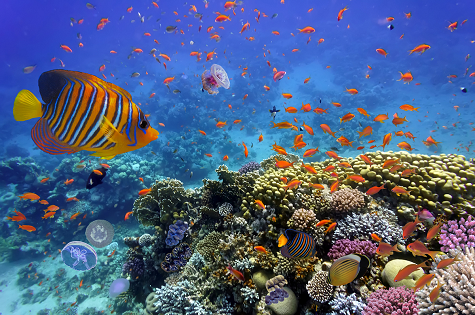Unit 18: Marine Resources
Unit 18: Marine Resources

Unit 18: Marine Resources

Unit 18: Marine Resources
Unit Focus
This unit introduces the student to the delicate balance between humans’ use of the ocean and the amount of use that the ocean can tolerate. Students will investigate the importance of the ocean as a natural resource.
Marine resources are materials and attributes found in the ocean that are considered to have value. That value can be intrinsic, or monetary. They include a huge number of things: biological diversity, fish and seafood supplies, oil and gas, minerals, sand and gravel, renewable energy resources, tourism potential, and unique ecosystems like coral reefs.
These resources can have great monetary value, and even when they don't the uniqueness and opportunity for education and human enrichment cannot be quantified. The way we manage and use these resources is therefore of great importance.
Management of Marine Resources
Humans have had disastrous impacts on marine resources. Overfishing has threatened not only human livelihoods, but biological diversity too. Pollution in the form of carbon dioxide has changed the acidity of oceans, and is causing the death of coral reefs (along with overfishing). These reefs are vital to the fishing industry, but also attract a great deal of tourism, and contain irreplaceable biological diversity.
Student Goals
- Define marine resources.
- List important living and nonliving marine resources.
- Distinguish between nonrenewable resources and renewable resources.
Vocabulary
Lesson Reading

